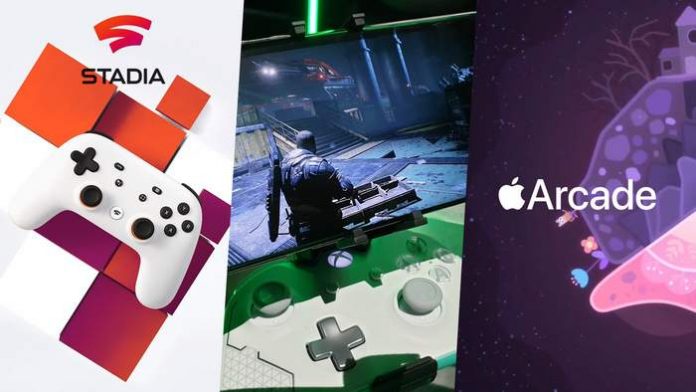Apple and Google, two of the biggest names in the tech world are launching cloud-based gaming services this year — Apple this week with its Apple Achade and Google in November with Google Stadia. Whether cloud-based gaming becomes the de facto standard for online games in future, will very much depend on the success of these two offerings from the tech giants.
Cloud-gaming works around the concept of reducing ‘friction’ for gamers. Friction in tech jargon refers to anything that increases inconvenience to users, including taking extra steps, think more than necessary or work harder than required to achieve something
Both Apple and Google are aiming to reduce friction in gaming by using cloud technology to store digital resources and services on their own servers, and deliver them to clients through the internet, in much the same way that documents or photos are now handled via Google Drive, Apple iCloud or DropBox.
Apple Arcade will use a model called ‘infrastructure as a service’, while the Google model will offer ‘platform as a service’. In the first model, you will need to have an Apple device which will then entitle you to play hundreds of games, from any location, including offline if you have downloaded the game earlier. In this model, data storage is outsourced to Apple data centers around the world, while the user is responsible for the operating system, maintenance of the software and real-time processing of data by their device.
In Google’s ‘Platform as a service’ model, you will be able to use any device that is compatible with the platform, while the search-giant will store the data on its servers worldwide, as well take care of all the maintenance and processing requirements. The user’s device acts only as a receptacle for hosting the application and user data.
Both services will use a flat rate, monthly subscription model to let users play a multitude of games that would otherwise cost hundreds, if not thousands, of dollars. For Apple Arcade all games are included in this fee, but you need suitable Apple hardware. In the case of Google, instead of needing an expensive PC with the latest hardware and software, or dedicated gaming console, users simply need an inexpensive computing device such as a phone, Chromecast, or smart TV.
If all this sounds great to you, remember that while technology gives us something, it also takes something in return. In the case of the two new cloud-gaming platforms, it is your data, privacy, connectivity, and your control over the game that you will be handing over to the tech firms.
Using cloud-based digital games, it is possible to track all kinds of user behaviour as you play and this information is a treasure trove for tech companies, most of whom do not have a reputation when it comes to the sanctity of your privacy.
On the connectivity front, your gaming experience will very much depend on the internet connection you have. For instance, to download a game in order to play it later on the Apple Arcade platform could take anywhere from a few minutes to hours depending on your connection speed.
Also, to achieve the 4k level of streaming resolution advertised by Google, you will require a steady flow of 20 megabits per second (Mbps). Even for 720p resolution, which barely qualifies as high-definition, you will need 10Mbps. In other words, in most cases you will need to opt for a higher tier of broadband plan available in your locality.
Moreover, if at any future date, Apple or Google decides to shut down their cloud-gaming services for whatever reason, it is bye-bye to all your games and gaming records.

















